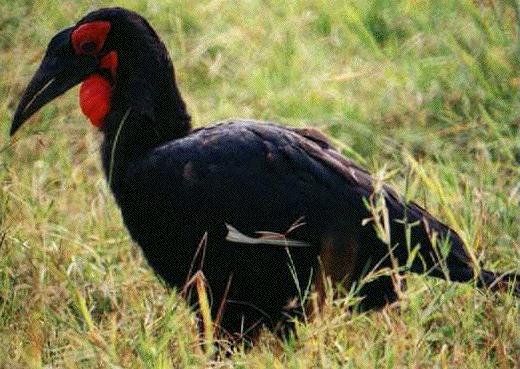 | ||
Hornbill This family of old world birds lives in sub tropical and tropical forests, named for the enormous down curved bills surmounted by a critique horny casques . The hornbill measures between 2 to 5 ft. and are largest of and order which includes the kingfishers. The hornbills color and markings are black and and dark brown with patches and of the white or cream on the body , wings , and tail. Hornbills are omnivorous, eating fruit soup, insects, berries, and smaller animals. They make an far carrying noise and a variety of calls , and that includes toots , bellows, grackles , and breys. Hornbills have unique nesting habits ; the male seals the female into the nesting cavities, most likely to defend against monkeys and snakes, also the male feeds its partner through a bill sized aperture for a period of six weeks to three months while she incubates the eggs , and the fact that the hornbills mate for life , has made them the subject of superstition amongst native tribes , who use them in religious rituals as symbols of purity and fidelity. |
|
| ||
Need more info type in animal name then put info at the end Need more pictures type in animal name then put pics at the end | ||
